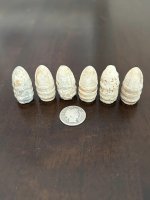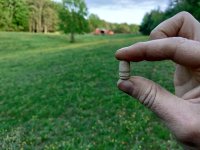garety
Newbie
- Jan 23, 2017
- 4
- 6
- Detector(s) used
- GB pro DP
- Primary Interest:
- All Treasure Hunting
So how fast do coins typically sink?
I realize IT DEPENDs, upon soil type. But I am just wondering how deep do you have to go to find a silver coins? I have a lot of red clay type soil where I am at in northern California. I have a gold bug pro DP, so ground balance is not an issue. Been finding a fair amount of coins probably 3 or 4 every hour, and I have been going to various parks and stuff for an hour or 2 after work. I have found a fair number of coins as deep as 5 inches, but the oddest coin I have found so far is a 1965, quarter. one year shy of silver.
Also does some soil decompose coins fast? I have gotten lots of 2000s coins that are barely readable. Just trying to figure out if I am doing anything wrong, as most the sites I have been hunting have had people there for 150 years, but most coins I find are less than 30 years old.
I realize IT DEPENDs, upon soil type. But I am just wondering how deep do you have to go to find a silver coins? I have a lot of red clay type soil where I am at in northern California. I have a gold bug pro DP, so ground balance is not an issue. Been finding a fair amount of coins probably 3 or 4 every hour, and I have been going to various parks and stuff for an hour or 2 after work. I have found a fair number of coins as deep as 5 inches, but the oddest coin I have found so far is a 1965, quarter. one year shy of silver.
Also does some soil decompose coins fast? I have gotten lots of 2000s coins that are barely readable. Just trying to figure out if I am doing anything wrong, as most the sites I have been hunting have had people there for 150 years, but most coins I find are less than 30 years old.
Amazon Forum Fav 👍
Upvote
0









